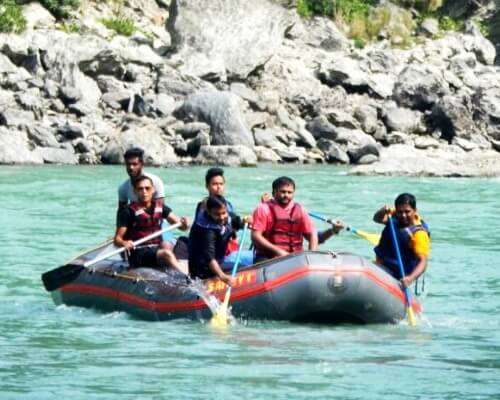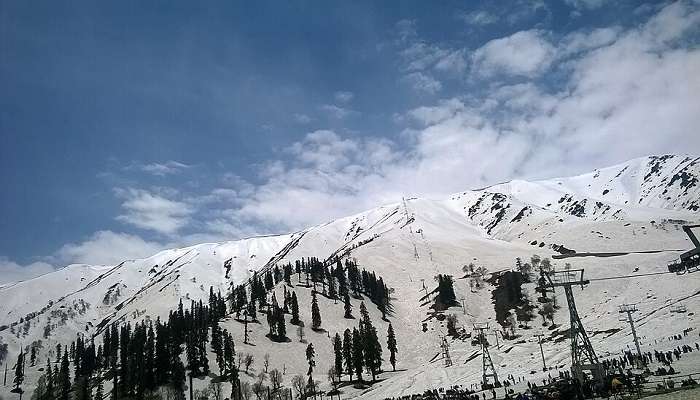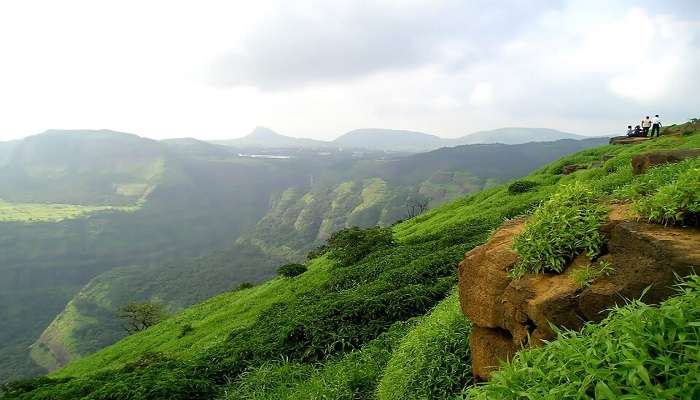9 Must-Try Things To Do In Kohima To Understand The Culture Of Nagaland To The Fullest
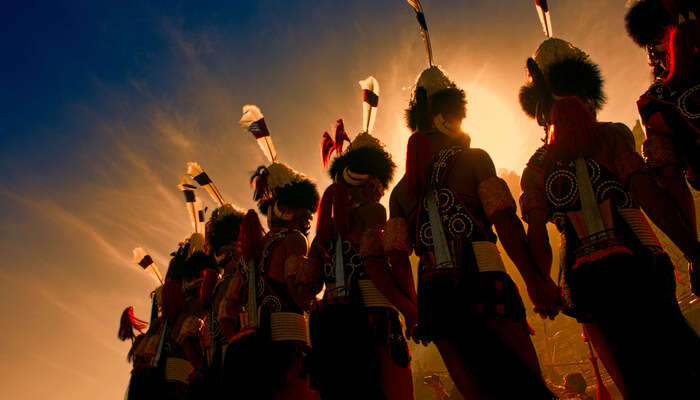
Kohima, the picturesque region is the home of the innocent and simple, yet courageous and brave Naga tribes. Nestled in the Eastern boundaries of the Himalayan ranges, Kohima is defined by the peaceful pace of life, devoid of the hustle and bustle of city life, serene environment and unpolluted, fresh air which attracts thousands of tourists who are in search of solace. It exhibits the exotic Naga heritage and culture and offers magnificent views of the neighbouring hills. Kohima, the capital of the northeastern state of Nagaland shares a common boundary with Myanmar. With so many things to do in Kohima, this destination is a must-visit. Don’t believe us? Take a look!
Top 9 Things To Do In Kohima
Kohima, the capital city of Nagaland has a lot to explore. So, here we have brought the list of the must to experience things on your trip.
1. Head To The First Green Village Of India, Khonoma
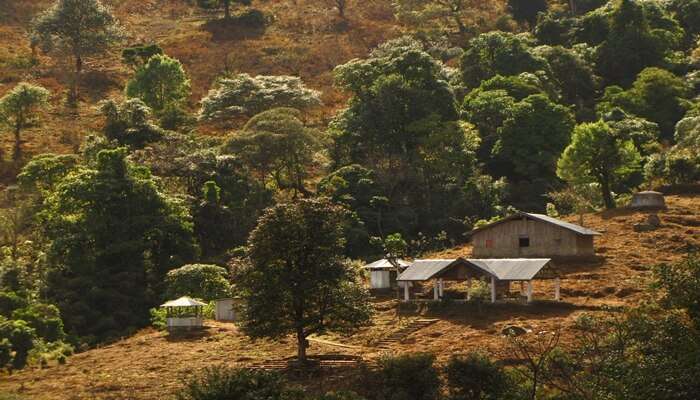
Khonoma is the home of the warrior tribe of Angami Nagas, which is situated at the top of a hill. The hamlet is divided into three villages and each of them protects their own respective. Khonoma is the place where the nagas fought with the British for the last time and lost. The place got its name from its own territorial plant Khuntoria, there is a strict ban in logging and hunting in this place which is an essential part of Naga culture due to which this place is well known. A town that belongs to the ‘Angami naga’ an ethnic group of Nagaland, Khonoma village is also a project of its kind. Khonoma is a green village that is located at a distance of 20 kilometers from the capital of Kohima.
A resourceful project that aims in converting a tribal village into an eco-friendly and moderate lifestyle village, has plenty of fanatical views that can change the whole place into something new. As you pass by the beautiful mountains of Nagaland, some beautiful scenarios like the green valleys, sloppy hills and even the big farms are a major part of the attraction. The village confronted a mass invasion in the late 1800s and they also gave a tough fight to the timber merchants in the 2000’s due to which they were forced to back off.
Location: 20 km west of Kohima
Entry fee: None
Timing: anytime after sunrise till sunset.
Must Read: 39 Places To Visit In Varanasi For The Best Of Culture, History, And Spirituality
Looking To Book A Holiday Package?
2. Head To The Naga Keeda Bazaar
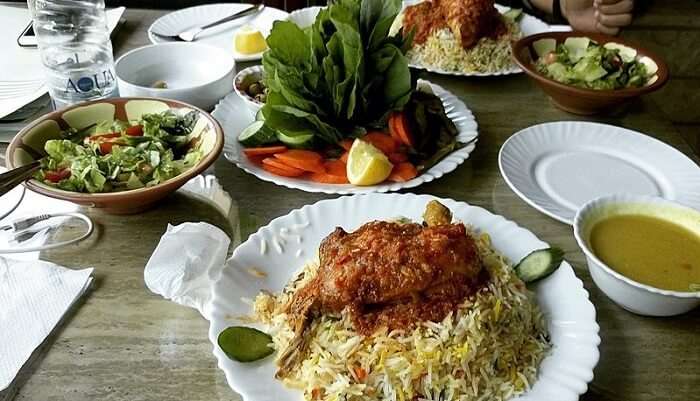
Needless to say, food habits say a lot about a particular place. Hence, one must not miss visiting the Naga keeda bazaar where all sorts of local food items are found.
The way to a man’s heart is through his stomach. Hence, visiting the Naga market has to be on your visiting list. You will find local stocks on all kinds of vegetables, meat, and everything. Starting from rabbits in Bamboo crates to honeycombs to borol, tadpoles in polythene bags, silkworm larvae, forest ferns, beef, fermented tofu everything is available here. The ambiance is lively where naga women are found dressed in sarongs and shirts, chewing betel leaves and selling beef, pork and dog meat, but have them only if you are ready and don’t force them into your stomach.
Location: Nagaland
Entry fee: None
Timing: None
Suggested Read: Flying To Dubai Is Cheaper Than Going To Varanasi This Weekend & No, It’s Not A Hoax!
3. Visit And Pay Your Tribute At The Kohima War Cemetery

Visiting the Kohima war cemetery is a grave experience as you walk past 2337 memorials and graves that are cremated in the garrison hills. In April 1944, the Japanese troops surrounded a small troop of the allied forces who were going towards capturing Delhi. But the troops of the Japanese killed about 65,000 allied soldiers, many of whom were from Kohima. There is an inscription written at the entrance of the memorial, which says”when you go home, tell them of us, and say we gave our today for your Tomorrow”.
This is one place in Kohima, that tourists don’t wish to miss at all. This beautiful cremation ground is dedicated to all the soldiers who died in the course of the Japanese invasion during World War 2. The cemetery is well maintained with mowed lawns, lush green fields, and fresh flowers. The deceased soldiers were from the east, Japan, UK, West Africa, and Burma.
Location: in the center of Kohima
Entry fees: None
Timing: 9:00 to 16:00, except Sundays
Suggested Read: 30 Amazing Places In India To Celebrate New Year
4. Trek To Mt Japfu
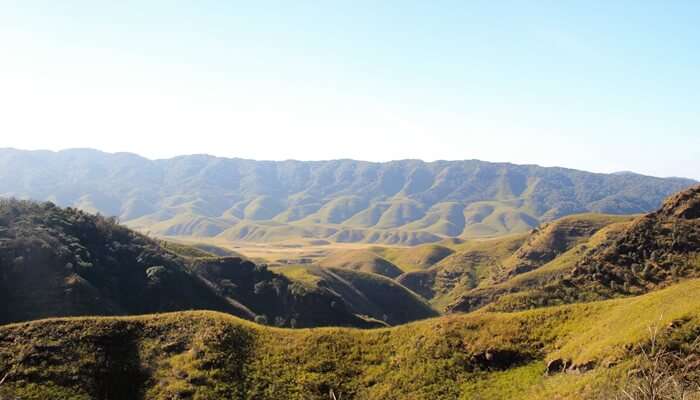
Nagaland is aptly called the “Switzerland of the East” because of the breathtaking views and landscapes that the Dzukou valley and the japfu peak offer. Also, trekking to Mt. Japfu is one of the most exciting trek experiences you can ever enjoy and hence is a must for all trekking enthusiasts. The second highest peak in Nagaland, Mt. Japfu is accessible through the village of kigwama. To take part in the trek to Mt japfu, one has to physically fit as it is quite challenging and needs to hire a guide. The trek route passes through dense rainforests and involves a little rock climbing as well. Once you reach the zenith of the peak, you enjoy a splendid panoramic view of the dzukou valley, popularly called Nagaland’s valley of flowers. This is so because this valley is abundant in flora and fauna like varieties of lilies and birds and rhododendrons
The valley is a sight to behold when in full bloom. It is considered to the foot of a crater of an extinct volcano and the valley seems to have covered the surface with the most exquisite species of flowers and grass. The Highest point of this valley is 2600 meters. Sitting on the top of the hill, you will be amazed to see the enchanting magnificence and the beauty of the valley.
Location:25 km south of Kohima
Entry fees: INR 30 per person for entering the Dzukou valley.
Timing: 6:00 am to 10:00 pm
Suggested Read: 13 Offbeat Destinations In India In December That You Must Explore This Year!
5. Take A Bite Of The World’s Hottest Chilli

The Bhut jolokia, considered to be one among the hottest chilies in the world is cultivated in Kohima on a large scale. This hot spicy chili is used as an ingredient in most of the recipes for consumption. Simultaneously, this chili also finds its application on fences and as smoke bombs as a preventive measure to keep wild elephants at bay. A typical Naga meal consists of smoked meat, fish vaporised in hollow bamboo tubes, sticky rice, and hot chili sauces. The Bhut Jolokia is indigenous to this region. Also, these people have fried momo and wash them with a kind of sour rice beer called Zuthou. Galho is the local version of khichdi here.
Location: Sendenyu, Nagaland.
Entry fee: None
Timing: None
Suggested Read: 14 Airports In Gujarat
Planning your holiday but confused about where to go? These travel stories help you find your best trip ever!
6. Explore The Culture At The Touphema Village, Kohima
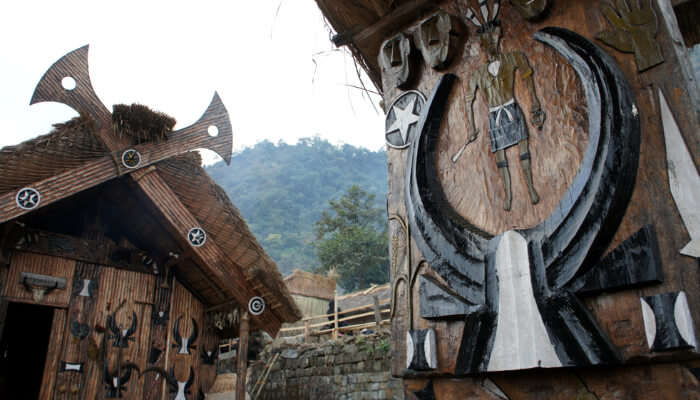
Touphema village is a town located on a verdant, green hillside. The local community built this township in collaboration with the tourism department of Nagaland. The Touphema village consists of little huts built and decorated in the conventional Naga designs and arts. The village aims at giving the tourists a feeling of staying in a Naga tribal house.
Touphema village renders a wonderful tribute in retaining the traditional culture, lifestyle, and heritage of the Naga people. Residing in that village will give you so much insight into the country’s life and customs of the Naga people that it becomes a lifetime experience. So ensure that you don’t miss visiting this place under any circumstances. In addition to the local food and stay, you can also enjoy traditional Naga dances like folk dances and retelling of folk stories.
Location: 100 km from Dimapur
Entry fee: free entry
Timing: best during the day
Suggested Read: World’s 15 Most Romantic Mountain Getaways: The Coziest Retreats
7. Boating At The Shilloi Lake

Tourists must not miss boating in the beautifully foot-shaped Shilloi lake, in the center of the Patkai range in Nagaland. Surrounded by evergreen valleys, this lake offers a picturesque eye soothing sight to every visitor. The residents of the Latsum village consider this lake to be important since they believe that the soul of a sacred child rests in the bottom of the Shilloi lake. This is one of the many reasons why this lake is not used for domestic purposes.
Amidst the tranquil and calm Ambience of the Patkai range in Nagaland’s easternmost corner, an exquisitely shaped lake in the form of a human foot is situated. Shilloi lake is around 4 meters deep.
Location: Phek district, 125 east of Kohima.
Entry fee: None
Timing: From 6:00 AM
Suggested Read: Surajkund Mela In Faridabad: The World’s Largest International Crafts Fair!
8. Enjoy Coffee With Music At The D Café

The D café is a place where artistic people gather and enjoy freshly brewed roasted organic coffee accompanied by delicious nibbles like waffles, omelets, chicken kebabs, and salads. People visiting on Wednesday evenings and afternoons after 3:30 pm get to enjoy live music with rich coffee.
Location: jail colony, Kohima, Nagaland.
Timing: 9:30 to 8:30. From Mon to Saturday
Entry fee: no entry fee
Suggested Read: 30 Things To Do In Dehradun For An Adventurous Yet Relaxing Vacation!
9. Catch A Naga Wrestling Match

A native sport, Naga wrestling matches are popular throughout the state of Nagaland. In Kohima, every year, an annual wrestling championship is organised with contestants participating from different villages. One should never miss that. Another place where wrestling matches are often held is the central ground in Kohima.
Location: Phek district, 125 east of Kohima.
Further Read: 49 Beautiful Places To Visit In North India For A Refreshing Vacay
Kohima is the home of the Angami Naga tribe and was previously known as Kewhima. Kohima is also noted as Thigoma by many. During World War II, Kohima has been the witness of the excessively serious war with Japan. The Commonwealth War Cemetery is one of the most visited spots in Kohima, as there reside the remains of thousands of soldiers who sacrificed their lives during the war. Kohima also offers a museum, a zoo, beautiful valleys, self-governed villages and many more for visitors. All of these things to do in Kohima should surely be on your list when you are planning your trip to Nagaland!
Disclaimer: TravelTriangle claims no credit for images featured on our blog site unless otherwise noted. All visual content is copyrighted to its respectful owners. We try to link back to original sources whenever possible. If you own the rights to any of the images, and do not wish them to appear on TravelTriangle, please contact us and they will be promptly removed. We believe in providing proper attribution to the original author, artist or photographer.
Please Note: Any information published by TravelTriangle in any form of content is not intended to be a substitute for any kind of medical advice, and one must not take any action before consulting a professional medical expert of their own choice.
Frequently Asked Questions About Things To Do In Kohima
What is the best time to visit Kohima?
Tourists find Kohima, the capital city of Nagaland in the northeast, as an ideal place to spend a peaceful vacation and make memories. Months between October and May are the best time to visit this place. These months are ideal for sightseeing and indulging in outdoor activities.
What is famous in Kohima?
The commonwealth war cemetery, which happens to be the cremation ground of thousands of dead soldiers who died fighting the Japanese during the second world war is the most popular site in Kohima. Kohima was initially called Thigoma.
Which language is spoken in Kohima?
The people of the Kohima district in the northeast speak a Tibetan-Burman language called angami. There are several dialects like Khonoma, chakroma, kehena, etc.
What does Kohima mean?
Originally, Kohima was known as Kewhira, meaning, “a land where the kewhi flower grows”. A British officer later changed the name to Kohima, as he couldn’t pronounce kewhira. Kewhi is a wildflower plant that grows in the mountainous regions.
Which is the nearest railway station to Kohima?
Dimapur railway station is the closest station to Kohima. It is about 74 km away. This station has trains connecting Guwahati to Kolkata.
What is the climate type of Kohima?
Kohima experiences humid subtropical weather. Summer starts from late March and continues till May. Average temperatures become 20 degrees Celsius. The average minimum temperature remains 14 degrees Celsius. Months from June to September witness heavy rainfall.
What is the elevation of Kohima?
Kohima, situated towards the south of Nagaland, lies at an altitude of 1444 m above the sea level.
Is Kohima safe for tourists?
Some People say that this place isn’t safe. However, visiting this amazing place once makes you realise your misconception. Kohima is safe and the residents here are extremely friendly and helpful. Kohima enjoys no nightlife and the city completely sleeps after it’s dark.
How to reach Kohima?
By air, the nearest domestic airport is the Dimapur airport. Once you land there, you can take buses or cabs to come to Kohima. By rail, the Dimapur station is the closest one. After you reach Dimapur, buses or cabs are easily available. However, if you want to travel by bus all the way, Nagaland state road transport buses connect Dimapur and Kohima.
Looking To Book An International Holiday?
People Also Read
Things To Do In Kodaikanal Things To Do In Agra Things To Do In Dalhousie

Exploring new places and trying out new food cuisines are two things that bring Seema all the happiness. Travel freak and a die-hard foodie are the synonyms that define her the best. Popular on social media by the name of ‘PandaReviewz’, lazing around the beaches, exploiting the sunset points, visiting the farthermost villages, exploring the renowned cities, trying out new food cuisines, and blogging about them are few things that keep Seema occupied, and happy!





















